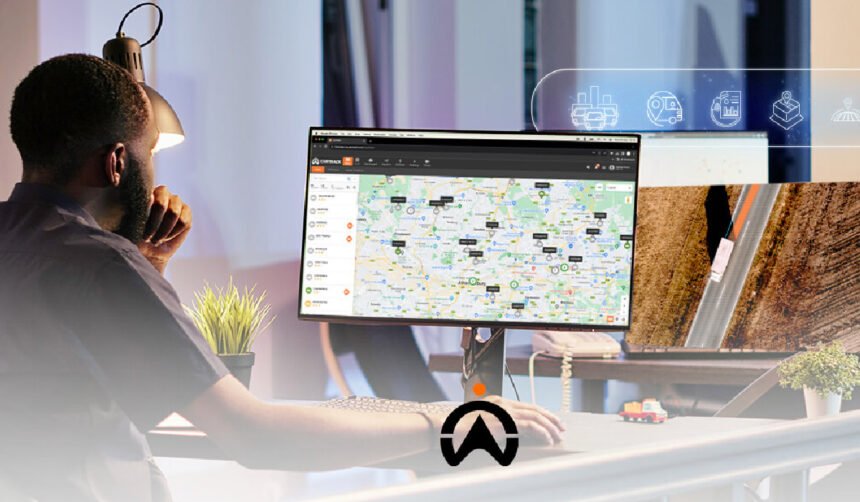Managing a trucking fleet involves countless moving parts—from vehicle maintenance and driver schedules to fuel costs and compliance requirements. The complexity of coordinating multiple vehicles, drivers, and routes while maintaining profitability can overwhelm even experienced fleet managers. Trucking fleet management software has emerged as a game-changing solution that streamlines operations, reduces costs, and improves overall efficiency.
Fleet management technology has evolved significantly from simple GPS tracking systems to comprehensive platforms that handle every aspect of fleet operations. These integrated solutions provide real-time visibility into fleet performance, automate routine tasks, and deliver actionable insights that drive better business decisions. Whether you’re managing a small fleet of five trucks or hundreds of vehicles across multiple locations, the right software can transform how you operate your business.
What is Trucking Fleet Management Software?
Trucking fleet management software is a comprehensive digital platform designed specifically to help transportation companies monitor, manage, and optimize their fleet operations. This technology combines GPS tracking, telematics data, and business management tools into a unified system that provides complete visibility into fleet performance.
The software collects data from various sources including vehicle sensors, driver logs, fuel cards, and maintenance records. This information is processed and presented through user-friendly dashboards that allow fleet managers to make informed decisions quickly. Modern platforms integrate seamlessly with existing business systems, creating a centralized hub for all fleet-related activities.
Core Features That Drive Success
Vehicle Tracking and Monitoring
Real-time GPS tracking forms the foundation of effective fleet management. Advanced systems provide precise location data, route history, and arrival time estimates. Geofencing capabilities alert managers when vehicles enter or leave designated areas, enhancing security and operational control.
Vehicle diagnostic monitoring goes beyond basic tracking to provide insights into engine performance, fuel consumption, and potential maintenance issues. This proactive approach helps prevent costly breakdowns and extends vehicle lifespan.
Driver Management and Safety
Comprehensive driver management features help ensure compliance with Hours of Service (HOS) regulations while promoting safe driving behaviors. Electronic Logging Devices (ELD) automatically record driving hours, reducing paperwork and ensuring accurate compliance reporting.
Driver scorecards track performance metrics such as harsh braking, rapid acceleration, and speeding incidents. This data helps identify training opportunities and recognize top performers, creating a culture of safety and efficiency.
Maintenance Scheduling and Management
Preventive maintenance scheduling based on mileage, engine hours, or calendar intervals helps avoid unexpected repairs and reduces downtime. The software sends automated alerts when maintenance is due and tracks service history for each vehicle.
Integration with maintenance providers streamlines scheduling and cost tracking. Digital maintenance records provide complete visibility into repair history and help optimize maintenance strategies over time.
Fuel Management and Cost Control
Fuel card integration provides detailed reporting on fuel purchases, helping identify unauthorized transactions and optimize fuel efficiency. Route optimization features suggest the most efficient paths, reducing fuel consumption and improving delivery times.
Idle time monitoring identifies opportunities to reduce fuel waste and operating costs. Driver coaching based on fuel efficiency metrics can lead to significant cost savings across the entire fleet.
Benefits of Implementing Fleet Management Software
Improved Operational Efficiency
Automated processes reduce administrative burden and eliminate manual data entry errors. Real-time visibility into fleet operations enables faster decision-making and more responsive customer service. Route optimization and dispatch management features help maximize vehicle utilization and minimize empty miles.
Cost Reduction Opportunities
Comprehensive cost tracking provides insights into all fleet-related expenses, from fuel and maintenance to insurance and driver wages. Data-driven maintenance strategies reduce unexpected repair costs and extend vehicle life. Fuel management features can deliver substantial savings through improved efficiency and reduced waste.
Enhanced Safety and Compliance
Automated compliance monitoring reduces the risk of violations and associated penalties. Safety scoring and driver coaching programs help reduce accidents and insurance claims. Electronic logging ensures accurate HOS compliance while reducing administrative overhead.
Better Customer Service
Real-time tracking enables accurate delivery time estimates and proactive communication about delays. Proof of delivery features streamline the invoicing process and reduce disputes. Enhanced visibility into fleet operations improves overall service quality and customer satisfaction.
Choosing the Right Software Solution
Scalability Considerations
Select a platform that can grow with your business, accommodating additional vehicles and users without requiring a complete system overhaul. Cloud-based solutions typically offer better scalability and lower upfront costs compared to on-premise systems.
Integration Capabilities
Ensure the software integrates with your existing business systems, including accounting software, customer relationship management (CRM) platforms, and dispatch systems. Seamless data flow between systems reduces duplicate data entry and improves accuracy.
User Experience and Training
Choose software with an intuitive interface that minimizes the learning curve for drivers and office staff. Comprehensive training and ongoing support are essential for successful implementation and user adoption.
Customization Options
Look for solutions that can be customized to match your specific business processes and reporting requirements. Flexible configuration options allow you to adapt the software to your unique operational needs.
Implementation Best Practices
Planning and Preparation
Successful implementation begins with thorough planning and clear objectives. Define your goals, identify key stakeholders, and establish success metrics before beginning the rollout process.
Conduct a comprehensive assessment of your current processes and identify areas where the new software will have the greatest impact. This analysis will help prioritize features and ensure you maximize the return on your investment.
Training and Change Management
Invest in comprehensive training for all users, from drivers to dispatchers and managers. Provide ongoing support during the transition period to address questions and ensure smooth adoption.
Communicate the benefits of the new system to all team members and involve them in the implementation process. User buy-in is crucial for successful adoption and long-term success.
Monitoring and Optimization
Regularly review system performance and user feedback to identify optimization opportunities. Most platforms provide detailed analytics that can reveal insights into fleet performance and areas for improvement.
Establish regular review cycles to assess system effectiveness and make necessary adjustments to configurations or processes.
Maximizing Your Investment
To get the most value from trucking fleet management software, focus on leveraging the data and insights it provides. Use performance metrics to identify top performers and areas needing improvement. Implement driver incentive programs based on safety and efficiency scores.
Regular system updates and feature additions keep your platform current with industry best practices and regulatory requirements. Stay engaged with your software provider to ensure you’re taking advantage of new capabilities as they become available.
Monitor key performance indicators consistently and use the data to drive continuous improvement initiatives. The most successful implementations are those where fleet managers actively use the insights provided by the software to make operational improvements.
Drive Your Fleet Forward
Trucking fleet management software represents a strategic investment in your company’s future. The combination of real-time visibility, automated processes, and data-driven insights creates opportunities for significant improvements in efficiency, safety, and profitability.
The transportation industry continues to evolve with new regulations, changing customer expectations, and emerging technologies. Fleet management software provides the foundation you need to adapt to these changes while maintaining competitive advantage.
Consider partnering with an experienced provider who understands the unique challenges of the trucking industry. The right solution, properly implemented and supported, can transform your fleet operations and position your business for long-term success.
For More Information, Visit Dotmagazine









